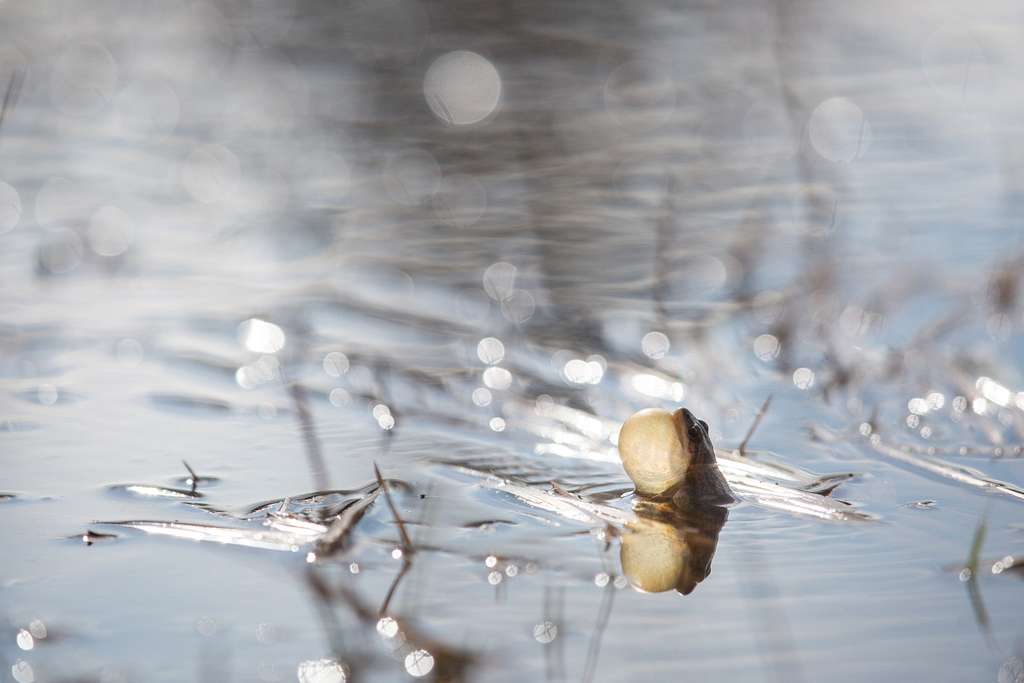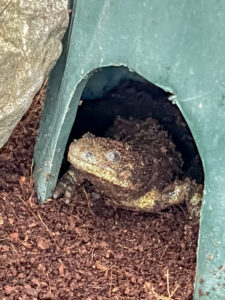by Sydney Nelson
Do you remember learning about the lifecycle of a frog during your earliest science lessons or library visits? You can probably recall a circular diagram showing translucent eggs developing into fish-like aquatic creatures. The creatures were tadpoles that grew legs and gradually became fully formed frogs. Maybe you remember the frog in the diagram showing off its long, hopping legs or sticking its tongue out to catch a fly.
The metamorphosis of frogs, toads and salamanders has charmed us for generations. As we look forward to spring, we can also look forward to amphibians emerging from hibernation to reproduce and populate their specific niches.
When and Where They Breed
In Alberta, we have eight species of frogs and toads. Both frogs and toads rely on using their vocal calls to attract mates, and their vocalizations allow biologists to track them by recording the sounds they make. Using autonomous recording units to measure the calls of frogs and toads in 2022, the Alberta Biodiversity Monitoring Institute found that of Alberta’s eight frog and toad species, boreal chorus frogs, wood frogs, and western toads were the first to be active, calling in early April (ABMI 2023). Wood Frogs, western toads, Canadian toads, and the plains spadefoot were active until late July.
We have two species of salamanders in Alberta: The long-toed salamander and the western tiger salamander (Canada 2023). Both are active in springtime, though they are quieter than frogs and toads, making them more challenging to track.
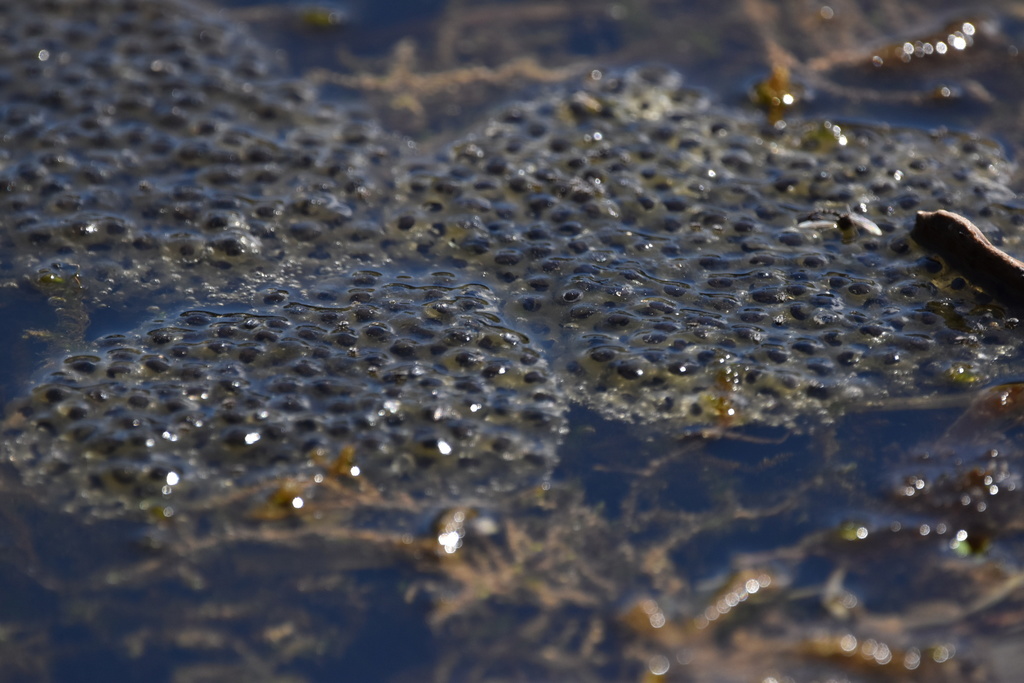
Frogs, toads, and salamanders lay their soft, jelly-like eggs in aquatic ecosystems and their tadpoles and larvae remain there until their legs have fully formed. In their aquatic larval stages, they feed on algae, aquatic roots and leaves, and insect larvae (Sather 2023). Even though some adult frogs can lay thousands of eggs at once (Federation n.d.), most will not make it to adulthood, meaning the safest place for amphibians to lay eggs will be low in predators and pollutants.
Vernal Pools
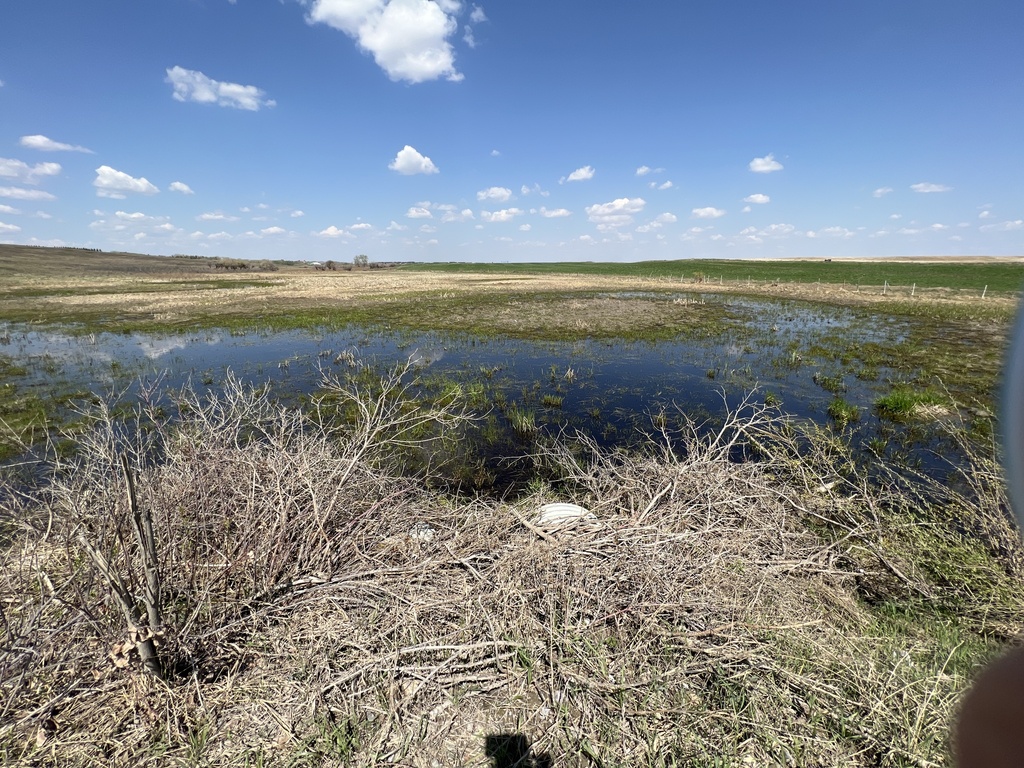
Most amphibians in Alberta hibernate through the winter, and they begin to re-emerge in late March when the temperature has increased enough to melt the snow. Land depressions fill with snow melt and rainwater, creating temporary ecosystems called vernal pools (Rossit 2016). These pools aren’t linked to streams or rivers, making them crucial for amphibians because the lack of fish creates a safer environment for their eggs and offspring (TUC 2022). Unfortunately, vernal pools can be unpredictable because they depend on specific climate conditions like temperature and rainfall (Rossit 2016), and not being impacted or destroyed by other species.
Risks to Amphibian Reproduction
The ability to live both on land and in water characterizes all amphibians. In the water, eggs and larvae are vulnerable to predators like birds and fish. Adult frogs, toads, and salamanders risk predation by birds-of-prey and mammals like foxes and skunks. Still, the biggest threats to amphibians in Alberta are human-related: pollution, pesticides, and habitat loss due to industrial development are some of the most significant risks to these indicator species. In Alberta, our ten local species of frogs, toads and salamanders tell us about the health of the ecosystems that they live in. Both air and water permeate their skin, making them particularly sensitive to pollution (Institute n.d.).
How We Can Support Frogs, Toads, and Salamanders
We can do many things to promote the safety and protection of Albertan amphibians. Protecting wetlands, including vernal pools, from pollution and industrialization ensures that frogs, toads, and salamanders have safe places to thrive. Fostering native plant growth and maintaining known amphibian habitats can also encourage population growth (Society n.d.).
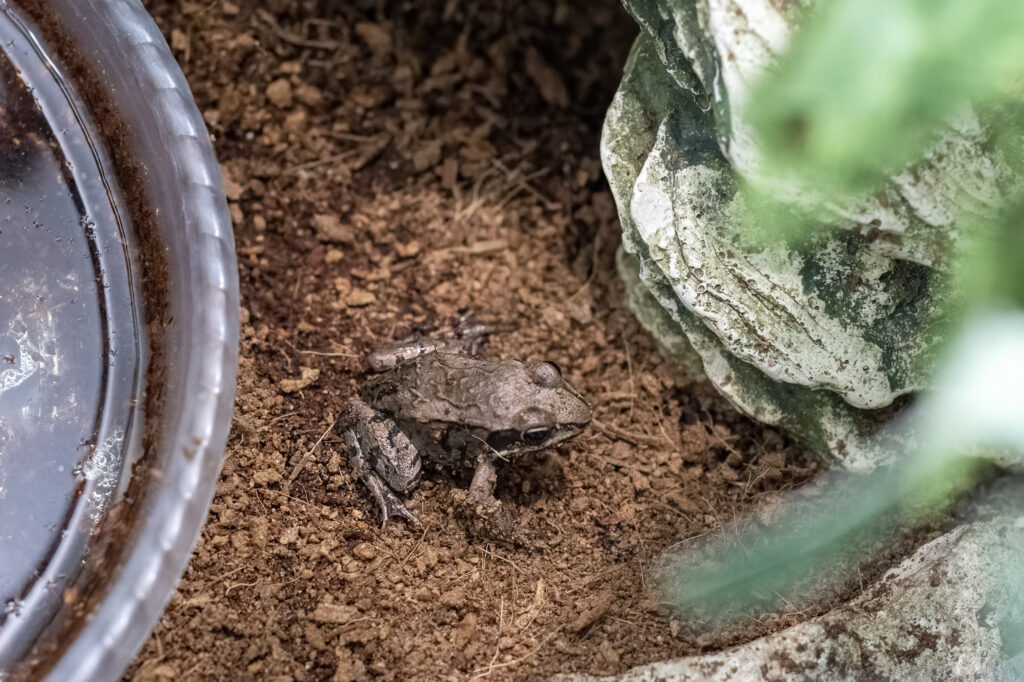
References
ABMI. 2023. Using autonomous recording units to develop species distribution models for vocalizing amphibians in Alberta, Canada. Jan 06. Accessed Feb 19, 2024. https://abbiodiversity.github.io/AmphibianModels/index.html#contact.
Canada, Parks. 2023. Salamanders. Jul 21. Accessed Feb 19, 2024. https://parks.canada.ca/pn-np/ab/waterton/nature/faune-wildlife/reptiles-amphibians/salamandre-salamander.
Institute, Alberta Biodiversity Monitoring. n.d. Amphibians Introduction. Accessed Feb 19, 2024. https://beta.abmi.ca/biobrowser/species-group/amphibians-intro.html.
Rossit, Tina-Louise. 2016. Vernal pools (Part One). Oct 5. Accessed Feb 19, 2024. https://www.natureconservancy.ca/en/blog/archive/vernal-pools.html.
Sather, Patrick. 2023. https://a-z-animals.com/blog/what-do-tadpoles-eat/. Sep 18. Accessed Feb 19, 2024. https://a-z-animals.com/blog/what-do-tadpoles-eat/.
Society, Canadian Herpetological. n.d. Amphibian and Reptile Conservation. Accessed Feb 25, 2024. https://canadianherpetology.ca/conservation/index.html.
TUC, Team. 2022. What is a Vernal Pool? Jul 5. Accessed Feb 19, 2024. https://tucanada.org/2022/07/05/what-is-a-vernal-pool/.

